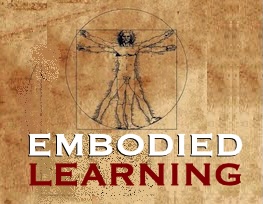
From the beginning of our marriage, Laura and I have shared a deep commitment to learning. Whether through books, conversations, lectures, experiences, or introspection, we’ve always sought to grow and expand our understanding. But we’ve also known that something essential can be overlooked in this pursuit: the mode of learning matters. If we rely solely on accumulating knowledge with our minds, we risk missing a deeper connection—with our own embodied wisdom, and with life itself.
We recognize that true integration happens when we embody what we’ve learned. Our bodies are not passive receivers of information; they are active participants in the learning process. It’s only when knowledge moves from thought into lived experience that it becomes real, grounded, and transformational. The mind may collect information—but it is the body that expresses, holds, and remembers it.
This is the heart of embodied learning, an approach that honors the inseparable link between mind and body. Learning isn’t just a cognitive act; it’s a full-bodied experience. By involving the body, we allow learning to become a deeper knowing—something we can feel, act on, and live by. It’s how ideas take root and begin to shape our daily lives.
Ancient spiritual and mystical traditions have long pointed to this truth. They remind us that reality extends beyond the physical, into realms of energy, spirit, and vibration. When we embody this understanding, not just intellectually, but physically, it can shift how we see the world. We move from dualistic or polarized thinking into a more unified vision, one that acknowledges complexity while honoring interconnectedness.
Modern research is beginning to affirm what these traditions have known all along. In fields like neurotheology, scientists study how spiritual practices such as meditation and prayer affect the brain and consciousness. These explorations suggest that our experiences, especially those touching the sacred or mysterious, may involve interactions with dimensions beyond the immediately visible. As this research evolves, it opens new doorways into understanding human consciousness and how our embodied experiences connect us with the deeper nature of reality.
At the Cuyamungue Institute, we find that Ritual Postures continue to offer direct access to this embodied wisdom. These postures engage both body and consciousness, helping us not only to experience altered states of awareness, but also to integrate those insights in meaningful, grounded ways. In this process, we step into a more fluid, spacious awareness—one that honors multiple dimensions of perception, presence, and knowing.
In the end, embodied learning invites us to move from knowing to being. It’s a call to let what we learn reshape us from the inside out, to not just think differently, but to walk, breathe, and live differently. And in doing so, we come closer to remembering who we truly are: multi-dimensional beings capable of deep presence, deep wisdom, and deep transformation.
“Embodied learning transforms ideas into lived presence—shaping not only how we think, but how we walk, breathe, and live.”
Paul Robear Tweet

